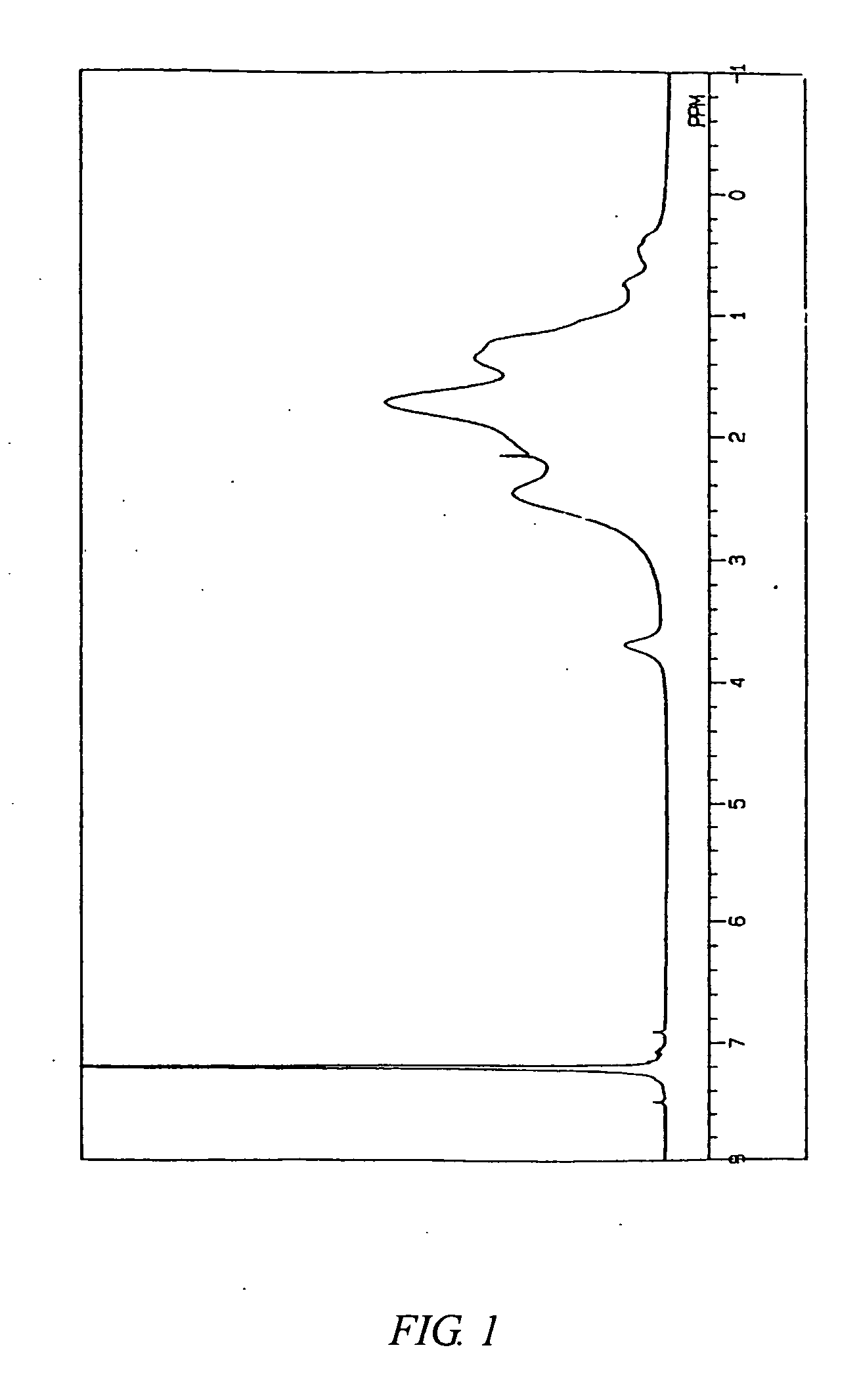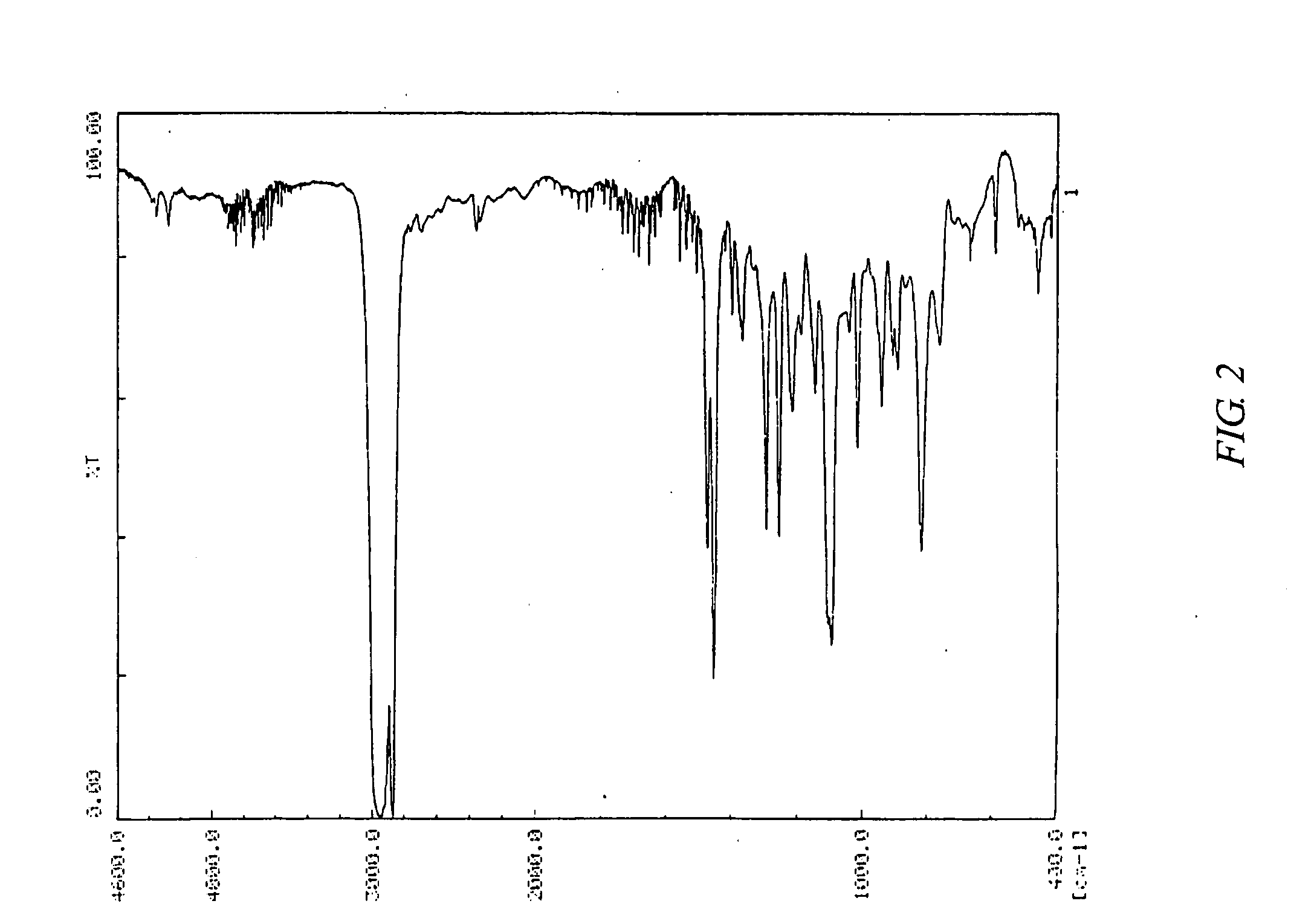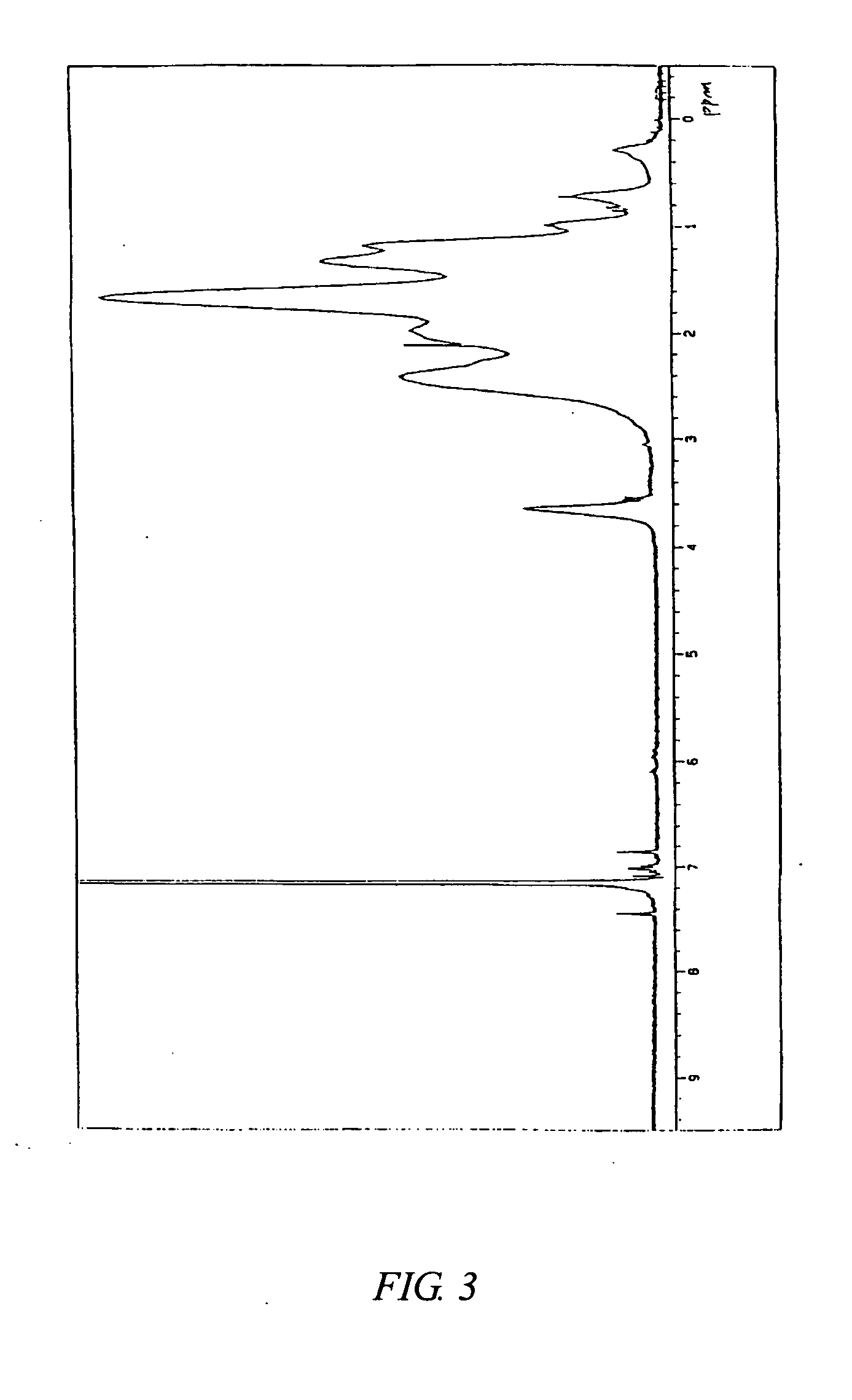Cyclic olefin addition copolymer and process for producing same, crosslinking composition, crosslinked product and process for producing same, and optically transparent material and application thereof
a technology of cyclic olefin and copolymer, applied in the direction of liquid crystal compositions, chemical instruments and processes, etc., can solve the problems of insufficient solvent resistance, chemical resistance, dimensional stability, and description nor suggestion of crosslinking, so as to improve dimensional stability, solvent resistance, and chemical resistance, and improve dimensional stability. stability, the effect of improving dimensional stability
- Summary
- Abstract
- Description
- Claims
- Application Information
AI Technical Summary
Benefits of technology
Problems solved by technology
Method used
Image
Examples
example 1
[0291] A 2,000-ml reaction vessel was charged with 1,187.5 mmol (111.6 g) of bicyclo[2.2.1]hept-2-ene and 62.5 mmol (14.9 g) of 5-[1′,4′,4′-trimethyl-2′,6′-dioxa-1′-silacyclohexyl]-bicyclo[2.2.1]hept-2-ene as monomers, 633 g of toluene as a solvent, and 15.0 mmol of styrene as a molecular weight modifier in an nitrogen atmosphere.
[0292] After the addition of 0.25 mmol (as a nickel atom) hexafluoroantimonic acid modified product of nickel octanoate which was prepared by reacting nickel octanoate in a hexane solution and hexafluoroantimonic acid at a molar ratio of 1:1 at −10° C., removing a precipitated byproduct Ni(SbF6)2, and diluting the resulting product with a toluene solution, 2.50 mmol of methyl alumoxane, and 0.75 mmol of boron trifluoride ethyl etherate, the monomers were polymerized at 30° C. for three hours.
[0293] The polymerization was terminated by the addition of methanol.
[0294] The conversion rate of the monomers into the copolymer was 95%.
[0295] 660 ml of water an...
example 2
[0305] A copolymer B was obtained in the same manner as in Example 1 except for using 1,125 mmol of bicyclo[2.2.1]hept-2-ene and 125 mmol of 5-[1′4′4′-trimethyl-2′,6′-dioxa-1′-silacyclohexyl]-bicyclo[2.2.1]hept-2-ene as monomers. The conversion rate into the copolymer was 95%.
[0306] The content of a structural unit originating from 5-[1′4′4′-trimethyl-2′,6′-dioxa-1′-silacyclohexyl]-bicyclo[2.2.1]hept-2-ene in the copolymer B measured by 270 MHz 1H-NMR was 8.0 mol %.
[0307] The Mn and Mw of the copolymer B were respectively 85,000 and 350,000. The Mw / Mn was 4.1. FIG. 3 shows a 1H-NMR chart of the copolymer B. FIG. 4 shows an infrared absorption spectrum of the copolymer B.
[0308] A non-crosslinked film B-1, a crosslinked film B-2, and a crosslinked composite film B-3 by using tetraalkoxysilane, each having a thickness of 150 μm, were prepared in the same manner as in Example 1. A film B-4 in which colloidal silica (average particles diameter: 10 nm) subjected to a surface treatment ...
example 3
[0310] A copolymer C was obtained in the same manner as in Example 1 except for using 1, 187.5 mmol of bicyclo [2.2.1]hept-2-ene and 62.5 mmol of 5-[1′-phenyl-4′,4′-dimethyl-2′,6′-dioxa-1′-silacyclohexyl]-bicyclo[2.2.1]hept-2-ene as monomers.
[0311] The content of a structural unit originating from 5-[1′-phenyl-4′,4′-dimethyl-2′,6′-dioxa-1′-silacyclohexyl]-bicyclo[2.2.1]hept-2-ene in the copolymer C measured by 270 MHz 1H-NMR was 4.2 mol %. FIG. 5 shows a 1H-NMR chart of the copolymer C. FIG. 6 shows an infrared absorption spectrum of the copolymer C.
[0312] The Mn and Mw of the copolymer C were respectively 99,000 and 297,000. The Mw / Mn was 3.0.
[0313] A non-crosslinked film C-1 and a crosslinked film C-2, each having a thickness of 150 μm, were prepared in the same manner as in Example 1. Properties of the films were evaluated.
[0314] The viscosity (25° C.) of the polymer solution used for preparing the film C-2 measured in the same manner as in Example 1 was 2,200 cp. The viscosi...
PUM
| Property | Measurement | Unit |
|---|---|---|
| glass transition temperature | aaaaa | aaaaa |
| thickness | aaaaa | aaaaa |
| heat resistance | aaaaa | aaaaa |
Abstract
Description
Claims
Application Information
 Login to View More
Login to View More - R&D
- Intellectual Property
- Life Sciences
- Materials
- Tech Scout
- Unparalleled Data Quality
- Higher Quality Content
- 60% Fewer Hallucinations
Browse by: Latest US Patents, China's latest patents, Technical Efficacy Thesaurus, Application Domain, Technology Topic, Popular Technical Reports.
© 2025 PatSnap. All rights reserved.Legal|Privacy policy|Modern Slavery Act Transparency Statement|Sitemap|About US| Contact US: help@patsnap.com



